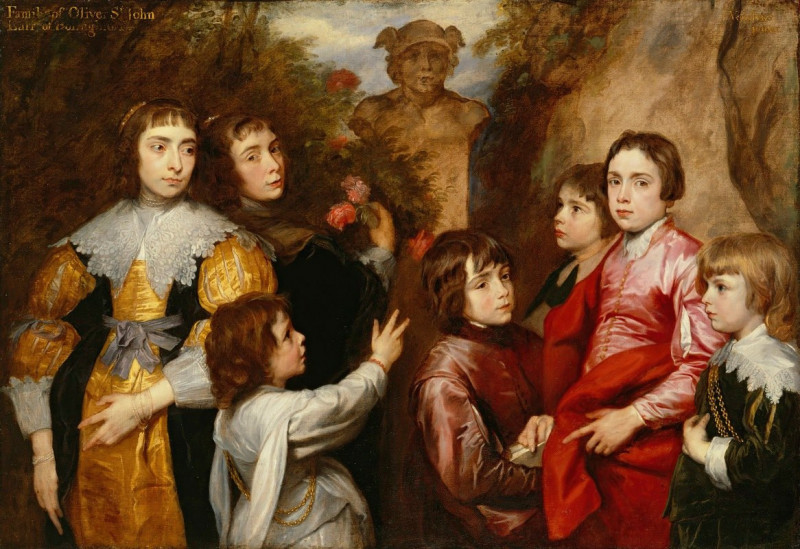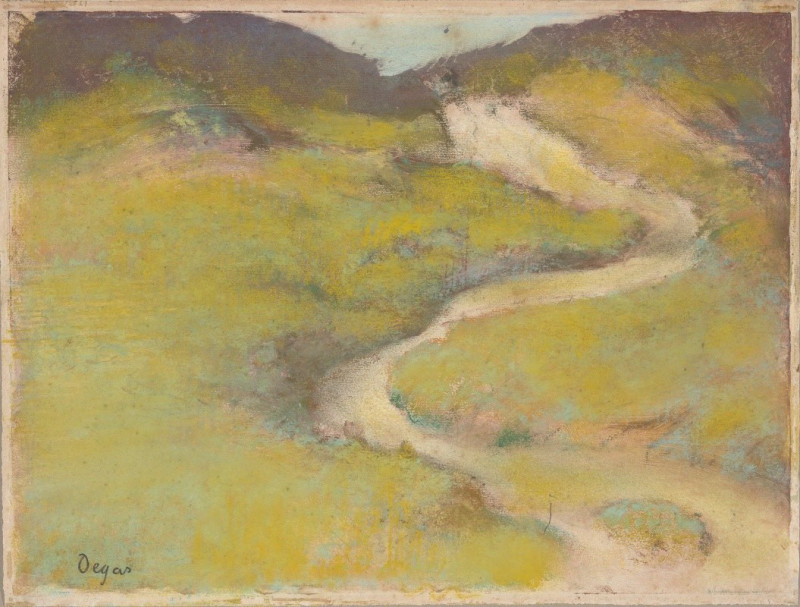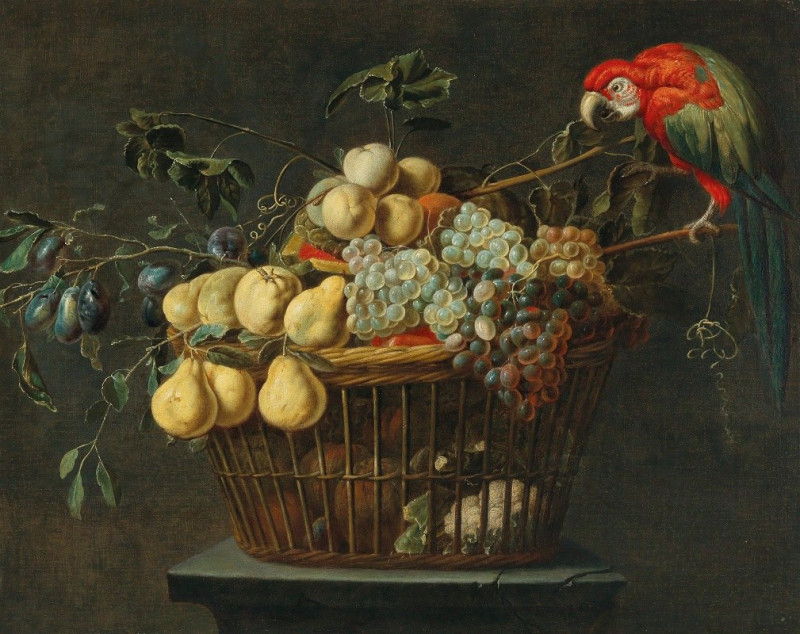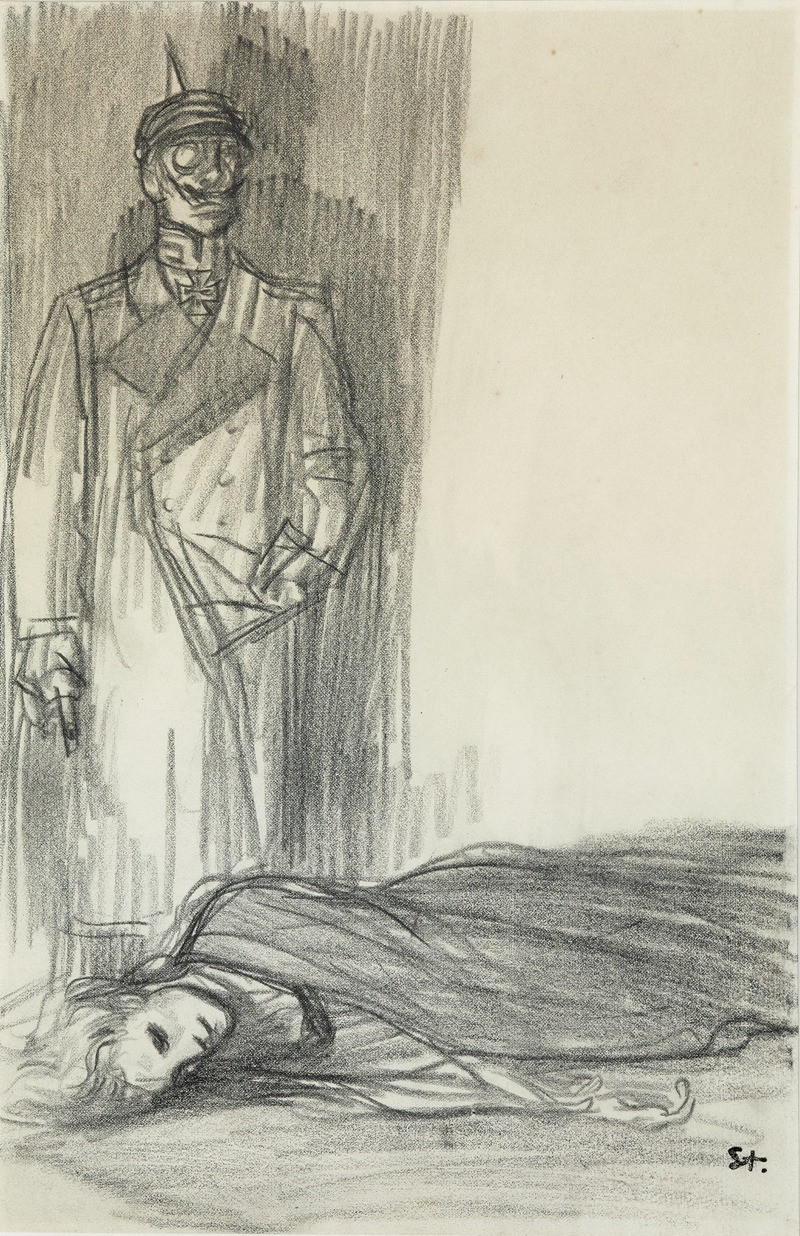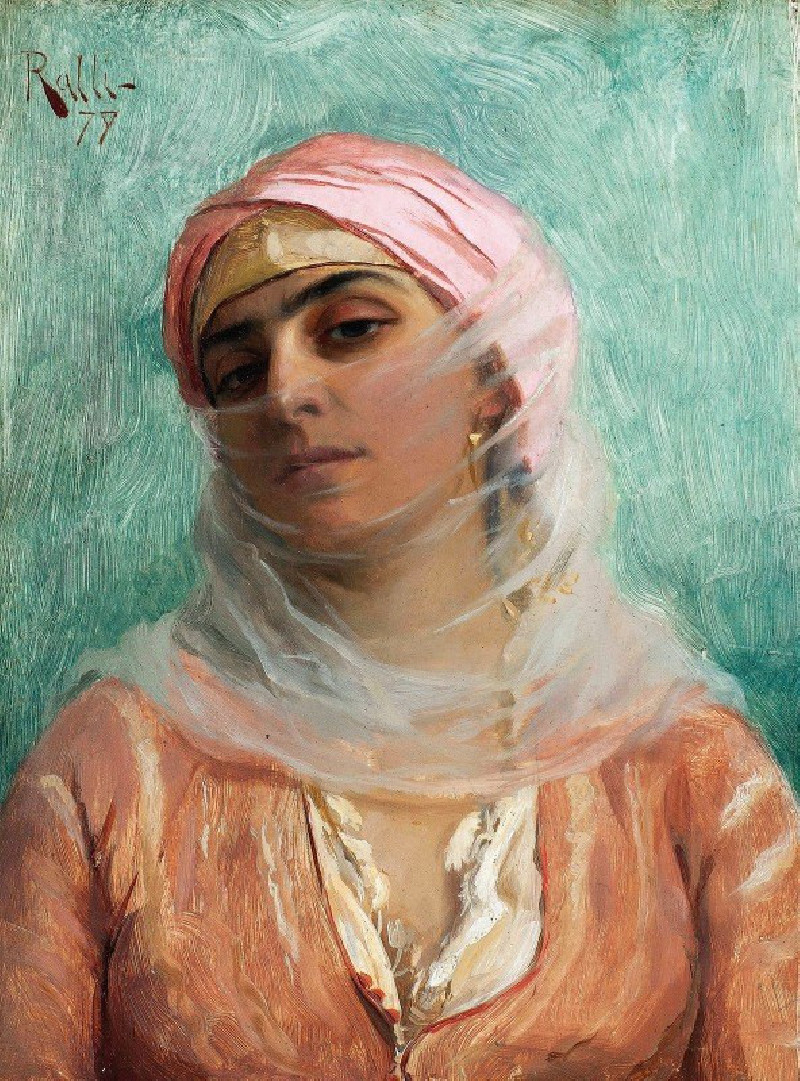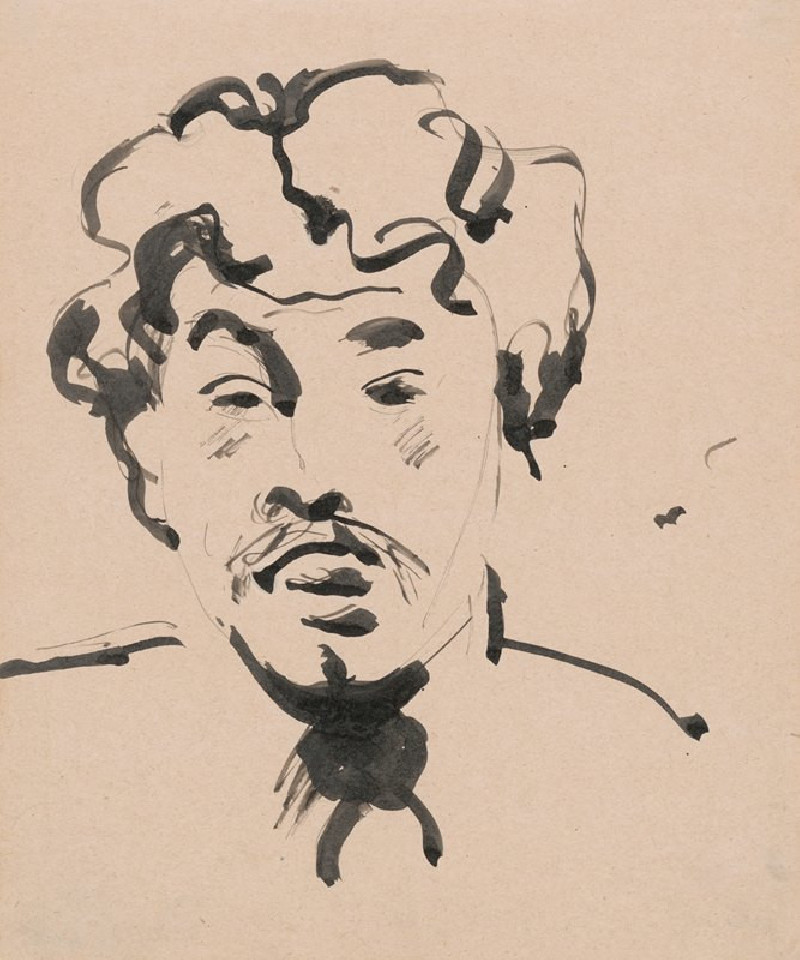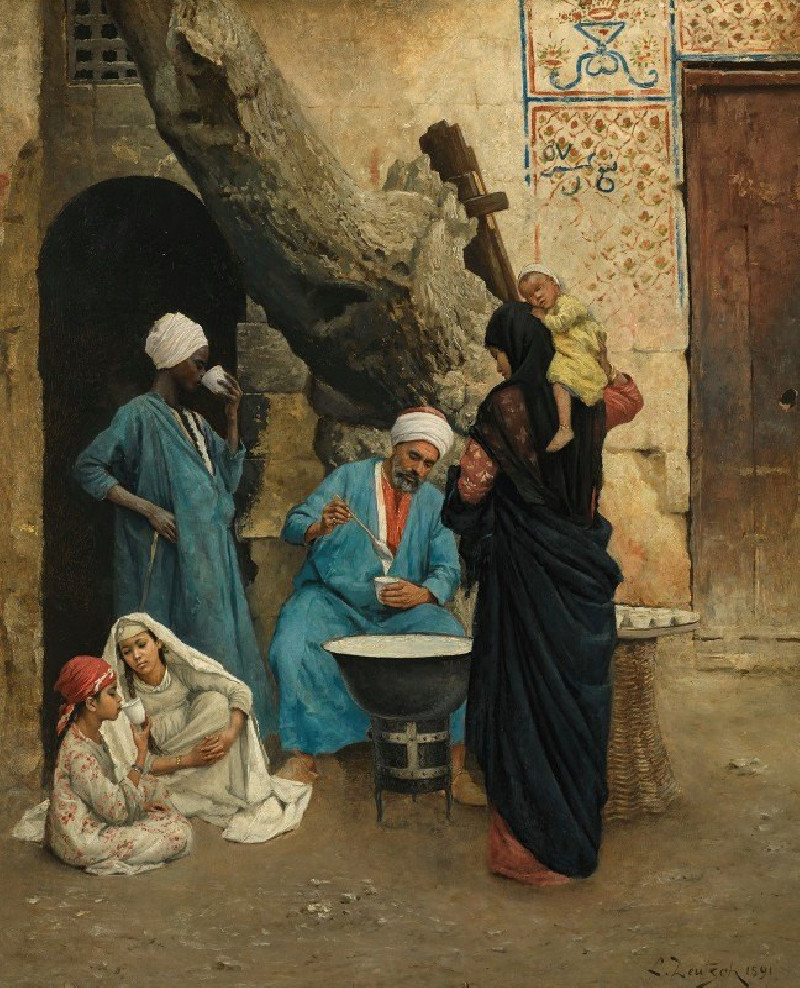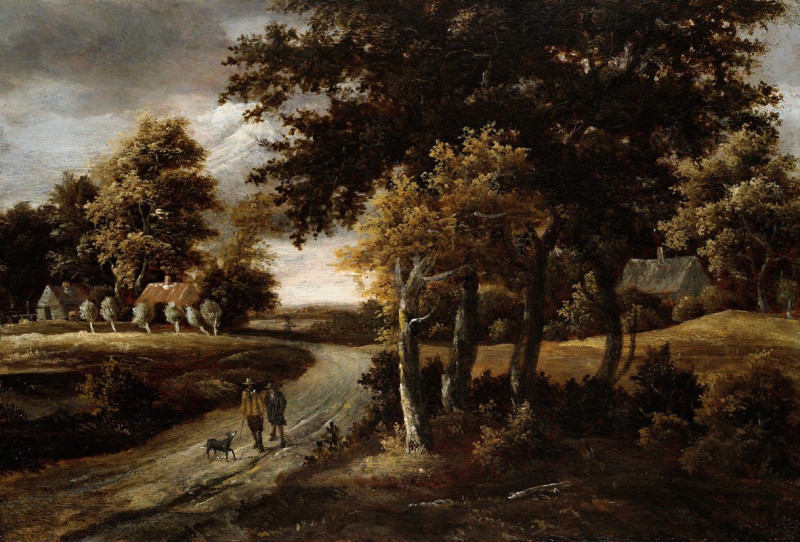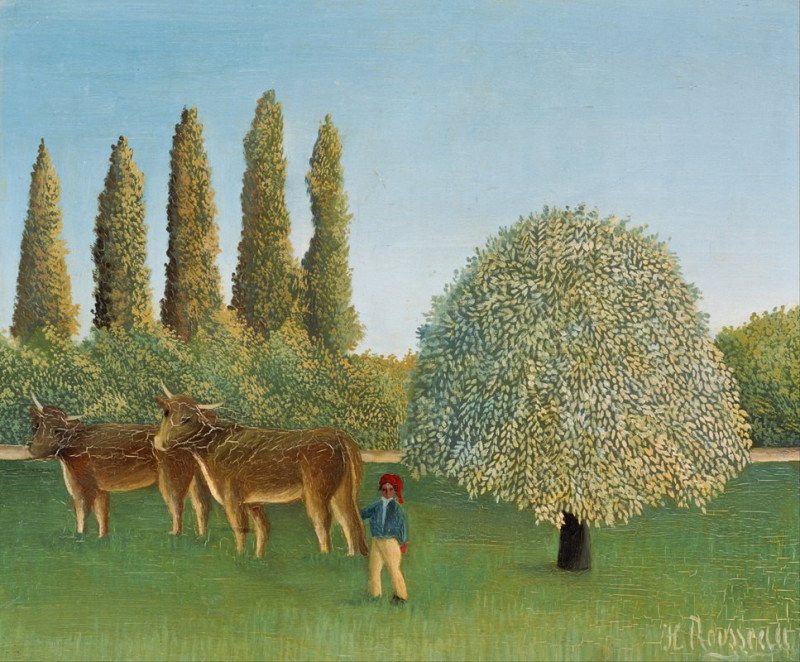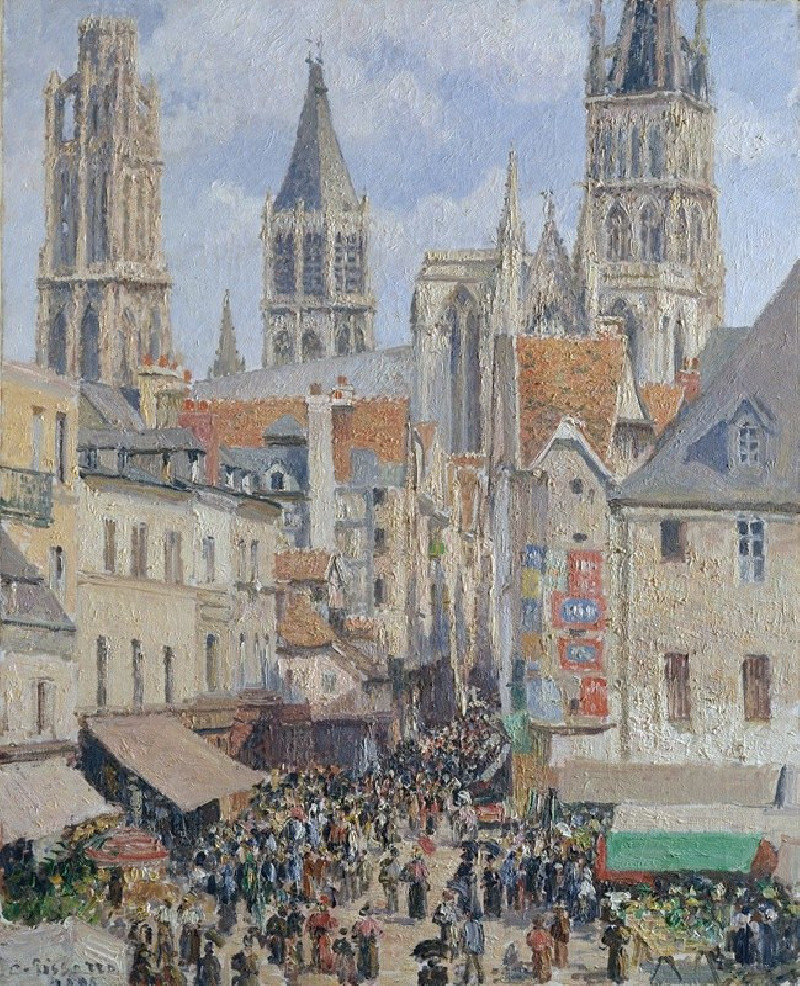A Family Group (between 1634 and 1635)
Technique: Giclée quality print
Recommended by our customers
More about this artwork
In this captivating masterpiece, titled "A Family Group," painted by Anthony van Dyck between 1634 and 1635, viewers are treated to an intimate glimpse of aristocratic family life during the Baroque period. This painting beautifully showcases Van Dyck’s skill in portraiture, his soft color palette, and his adeptness at capturing the nuanced expressions of his subjects.The composition features six figures, presumably members of a noble family, unified by their elegant attire and dignified poise. The central figures, two women dressed in luxurious gold and black garments, anchor the group with a sense of grace and maternal watchfulness. Surrounding them are four children, each portrayed with individual personalities, from the gentle hand gesture of the young boy in white to the curious gaze of another in dark red.Beyond the figures, Van Dyck introduces an atmospheric background, blending a sculptural figure and lush foliage with a soft, earthy palette that complements the vibrant tones of the subjects’ clothing. This setting not only reinforces the stature and wealth of the family but also creates a harmonious balance between nature and the elegance of human creation."A Family Group" is not merely a display of Van Dyck’s technical prowess; it is a window into the values and lifestyle of the era. The rich attire and poised demeanour reflect societal ideals of the time, while the intimate grouping and gentle expressions ensure the painting remains relatable and warmly human.
Delivery
Returns
Sir Anthony van Dyck (1599 – 1641) was a Flemish Baroque artist who became the leading court painter in England after success in the Spanish Netherlands and Italy.
The seventh child of Frans van Dyck, a wealthy Antwerp silk merchant, Anthony painted from an early age. He was successful as an independent painter in his late teens, and became a master in the Antwerp guild in 1618. By this time he was working in the studio of the leading northern painter of the day, Peter Paul Rubens, who became a major influence on his work.

